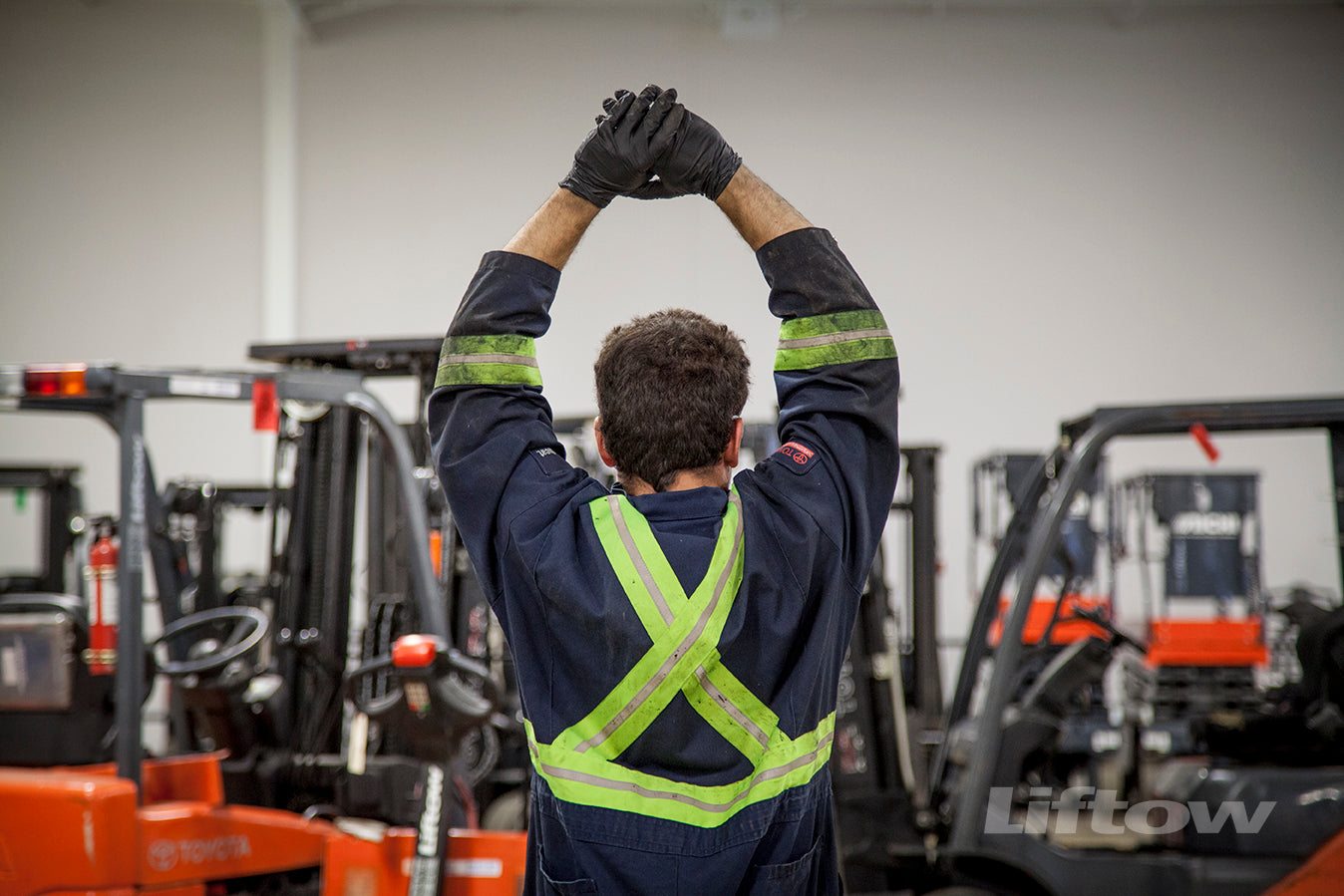
Stretching, Moving and Employee Safety
In previous posts, we’ve talked about the benefits of an ergonomic workspace, which may mean anything from accessible lift truck controls to a reduction in dangerous blind corners and distracting overhead lights. When you reshape your workplace to reduce the hazards that lead to accidents, injury, compromised senses or repetitive stress, you protect your workers from harm. And as you do this, you also protect your company’s reputation and bottom line.
But in addition to reshaping workstations and the general environment, wise managers constantly evaluate the actual physical positions, motions and postures adopted by employees during an average shift. Some potentially dangerous activities -- like overhead reaching, excessive standing or the kind of lifting that places strain on the lower back -- can easily go unnoticed. And employees typically don’t complain about problems like these until they actually feel resulting pain or musculoskeletal damage. But at that point, any managerial changes may be arriving too late.
The simple message: Carefully review each of the positions, shifts and tasks that take place in your warehouse or shop floor. If the repetitions of a dangerous activity (such as twisting or lifting) exceed OHSA recommendations within a two-, three- or eight-hour period, consider these changes:
Encourage targeted stretching.
Before, after and at regular intervals during a potentially hazardous shift, require employees to stop what they’re doing for a few minutes, or even seconds. Assign a clear set of instructions for a “stretch break,” and target the muscle groups most affected by the activity of the shift. For example, prescribe specific stretches for the hands and arms, the eyes, or the ankles and feet.
Encourage general stretching.
If many, or all, of your workplace roles involve physical activity—or a lack thereof—begin the workday by encouraging a few minutes of general stretching activities. You can organize this endeavor, require it or simply encourage your managers to set an example and lead the way for their individual teams.
Stretching a part of the body prior to a shift that relies on that area can bring a host of benefits: It can increase circulation and oxygen delivery to the muscles and other cells in that area. It can lengthen, loosen and warm the ligaments and tendons that are crucial to proper motion and joint protection. And it can also warm, lengthen and prepare the muscle fibers in that area for intense activity and actions that require quick reflexes. More blood flow and activity in any muscle group can increase range of motion and prevent the kinds of injuries that occur when sudden demands are placed on cold, rigid tissues.
Besides, stretching feels great! Keep your employees healthy, feeling good and ready for anything the workday might bring.
